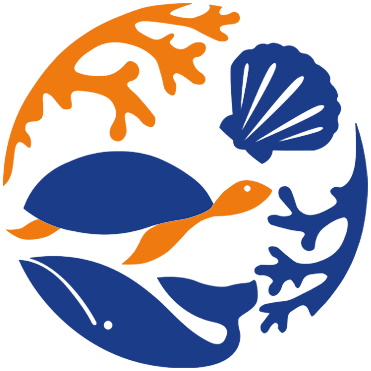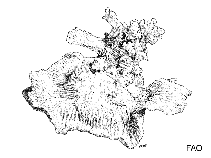Dipsastraea pallida (Dana, 1846)
| Native range | All suitable habitat | Point map | Year 2050 |

|
| This map was computer-generated and has not yet been reviewed. |
| Dipsastraea pallida AquaMaps Data sources: GBIF OBIS |
Upload your photos
Google image | No image available for this species;
drawing shows typical species in Merulinidae.
Google image | No image available for this species;
drawing shows typical species in Merulinidae.
Classification / Names आम नाम | उपशब्द | CoL | ITIS | WoRMS
Hexacorallia | Scleractinia | Merulinidae
Environment: milieu / climate zone / गहराई सीमा / distribution range पारिस्थितिकी
प्रवाल-भित्ति संयुक्त; गहराई सीमा 6 - 30 m (संदर्भ 115199). Tropical; 36°N - 34°S, 26°E - 137°W (संदर्भ 848)
Distribution देश | ऐफ ऐ ओ क्षेत्र | Ecosystems | संयोग | भूमिका
Indo-Pacific. Tropical to subtropical.
Length at first maturity / आकार / Weight / Age
परिपक्व अवधि: Lm ? range ? - ? cm
Short description आकृति विज्ञान
Colony: massive. Corallites: circular, closely compacted in shallow water, more widely spaced in deeper water. Septa: widely spaced, distinctly irregular. Often poorly developed paliform lobes. Color: pale yellow, cream or green, with dark brown or green oral discs (Ref. 848).
Minimum depth from Ref. 104515. Found in all reef environments, often a dominant species of back reef margins (Ref. 848). Also on subtidal rock, rocky reefs, outer reef channel, back and foreslope and lagoons; occasionally in inter-reef soft substrate (Ref. 98471). Tends to form low heads or encrust rocks in shallow waters (Ref. 130769).
Life cycle and mating behavior परिपक्व अवधि | पुनरुत्पत्ति | मछलीऔ का अंडे देना | Eggs | Fecundity | Larvae
Hermaphroditic (Ref. 113712). Mature gametes are shed into the coelenteron and spawned through the mouth. Life cycle: The zygote develops into a planktonic planula larva. Metamorphosis begins with early morphogenesis of tentacles, septa and pharynx before larval settlement on the aboral end (Ref. 833).
Main reference
संदर्भ | संयोजक | सहयोगीयो
Ross, M.A. and G. Hodgson. 1981. (संदर्भ 8294)
IUCN Red List Status
(संदर्भ 130435: Version 2024-2)
Least Concern (LC) ; Date assessed: 24 October 2023
CITES status (संदर्भ 108899)
Appendix II: International trade monitored
CMS (संदर्भ 116361)
Not Evaluated
Threat to humans
Human uses
| FishSource |
साधन
अधिक जानकारी
Trophic Ecology
खाद्य पदार्थ
संघटक आहार
आहार खपत
Food rations
परभक्षी
संघटक आहार
आहार खपत
Food rations
परभक्षी
पारिस्थितिकी
Population dynamics
बाढ़
Max. ages / sizes
Length-weight rel.
Length-length rel.
Length-frequencies
Mass conversion
भर्ती
बहुतायत
Max. ages / sizes
Length-weight rel.
Length-length rel.
Length-frequencies
Mass conversion
भर्ती
बहुतायत
Life cycle
Distribution
इंटरनेट स्रोत
BHL | BOLD Systems | CISTI | DiscoverLife | FAO(Publication : search) | Fishipedia | GenBank (genome, nucleotide) | GloBI | Gomexsi | Google Books | Google Scholar | Google | PubMed | Tree of Life | Wikipedia (Go, खोज) | Zoological Record
Estimates based on models
Preferred temperature
(Ref. 115969): 22 - 28.2, mean 26.6 (based on 561 cells).
Price category
(संदर्भ 80766):
Unknown.



